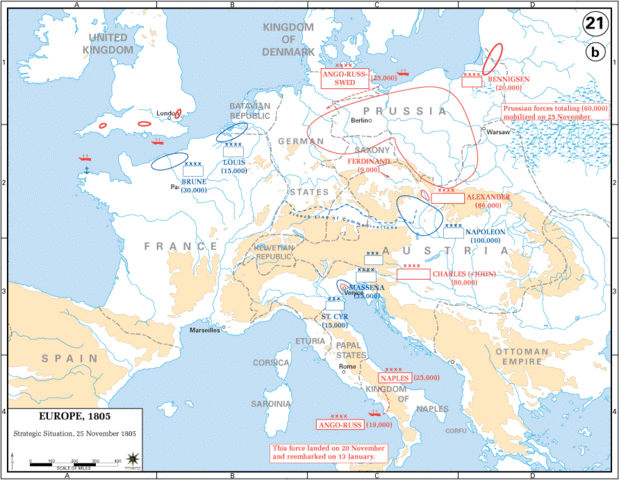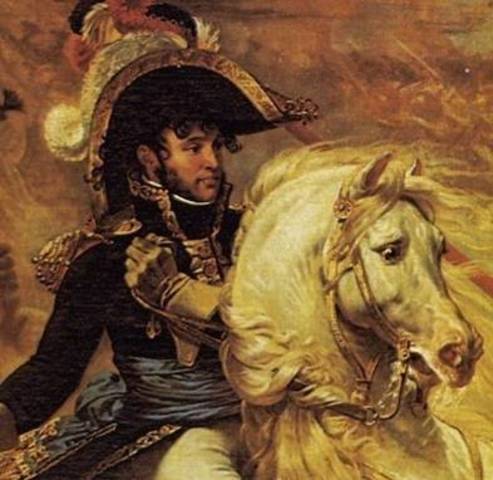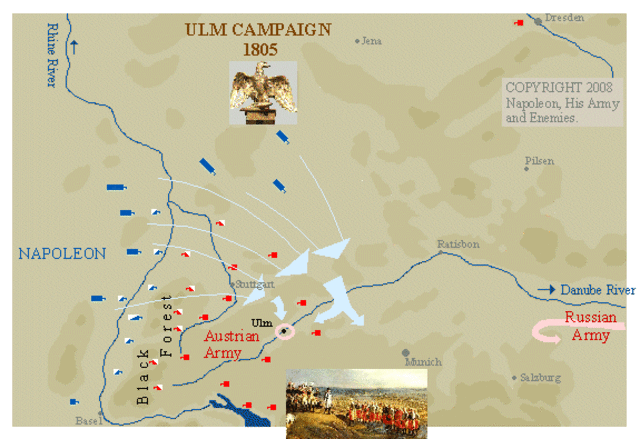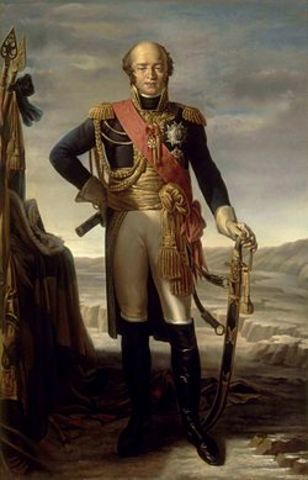|
|
Post by Jean Lannes on Dec 19, 2015 5:19:55 GMT
Don't do Napoleon battles. Especially not with Lannes in them. I would do the Istanbul one. Well, at Wagram Lannes was dead/dying he was shot in Aspern but he died at a later point. and at Austerlitz he commanded the left side which saw the least amount of action. I doubt I'd even mention him. All others don't have him either. |
|
|
|
Post by Jean Lannes on Dec 19, 2015 5:24:21 GMT
I'll do it between Austerlitz and Istanbul
A 1-3 means Austerlitz and a 4-6 means Istanbul
WgGT2x|4
|
|
|
|
Post by Jean Lannes on Dec 19, 2015 5:27:00 GMT
It will be Istanbul 1453.
I can do the beginning part Monday (maybe Tuesday morning for EU)
and the full one Tuesday or Wednesday.
|
|
|
|
Post by General William T. Sherman on Dec 19, 2015 12:45:39 GMT
Awesomeness!
|
|
|
|
Post by Suvorov on Dec 19, 2015 12:57:22 GMT
Can I do Austerlitz, Kursk, Moscow and Stalingrad?
|
|
|
|
Post by General William T. Sherman on Dec 19, 2015 13:31:29 GMT
Can I do Austerlitz, Kursk, Moscow and Stalingrad? You can do any battle you want, I just don't want to do many WWII battles myself.  |
|
|
|
Post by Suvorov on Dec 19, 2015 14:52:14 GMT
Prelude
For 3 years, l’Armée d’Angleterre practised and practised for the invasion of England. 200,000 men -7 corps with each around 30,000 men- were gathered near the English Channel and 2 fleets were built to support their attack. However, William Pitt had other plans: He would create the Third Coalition with Great Britain, Russia, Austria and Portugal.  Invading England: An impression Invading England: An impressionWhen Napoleon heard about Pitt’s plans and that Austria was mobilizing, he called Pierre Daru. Napoléon tried to evade this war, but now it was clear that war had to come, there was no time left to hesitate. Quickly he dictated the whole plan de campagne including whether frontal attacks should be made or manoeuvres sur les derrieres; the route of the various marches each corps should make, the duration of the stay of each corps in a particular town/city and the expected mistakes the enemy High Command would make.  The long time of training along the English Channel made Napoléons 7 corps -led by Murat, Davout, Jean Lannes , Marmont, Bernadotte and Soult- Chuck Norris x 200,000. After La Grande Armée had crossed the Rhine, they turned 90 degrees (One of Napoleon’s greatest achievements) and fromed a front to the South. Before general Mack knew what was going on, the French cut his communication lines and his possible retreating routs. Only at this point, Mack knew that the shoot had hit the fan. Although negotiations were opened with him, he still hoped that an army led by marshal Werneck would relieve him out of his situation. Sadly for him, Murat wiped the army out and therefore, Mack capitulated, giving Napoléon 20,000 men infantry, 3300 cavalrymen, 17 generals and 59 pieces artillery.  Now, there was nothing left inbetween La Grande Armée and Vienna. After Murat had captured a bridge that led to Vienna with a socalled “stratagem” (trick in a war), one of the most important cities of the Holy Roman Empire was open for Napoleon. But there still was no time to relax. La Grande Armée was reduced to merely 78,000 soldiers and their situation was awful: Prussia in the North was mobilizing 200,000 men and if the Coalition was allowed to regroup, the enemy would have 400,000 men facing La Grande Armée.  Meanwhile, Napoléons army was spread out and for the upcoming battle, he had to concentrate them, find a good defensive position, improvise a plan de campagne and ultimately and defeat an army superior in numbers. 
|
|
|
|
Post by Jean Lannes on Dec 19, 2015 15:42:51 GMT
Prelude
For 3 years, l’Armée d’Angleterre practised and practised for the invasion of England. 200,000 men -7 corps with each around 30,000 men- were gathered near the English Channel and 2 fleets were built to support their attack. However, William Pitt had other plans: He would create the Third Coalition with Great Britain, Russia, Austria and Portugal.  Invading England: An impression Invading England: An impressionWhen Napoleon heard about Pitt’s plans and that Austria was mobilizing, he called Pierre Daru. Napoléon tried to evade this war, but now it was clear that war had to come, there was no time left to hesitate. Quickly he dictated the whole plan de campagne including whether frontal attacks should be made or manoeuvres sur les derrieres; the route of the various marches each corps should make, the duration of the stay of each corps in a particular town/city and the expected mistakes the enemy High Command would make.  The long time of training along the English Channel made Napoléons 7 corps -led by Murat, Davout, Jean Lannes , Marmont, Bernadotte and Soult- Chuck Norris x 200,000. After La Grande Armée had crossed the Rhine, they turned 90 degrees (One of Napoleon’s greatest achievements) and fromed a front to the South. Before general Mack knew what was going on, the French cut his communication lines and his possible retreating routs. Only at this point, Mack knew that the shoot had hit the fan. Although negotiations were opened with him, he still hoped that an army led by marshal Werneck would relieve him out of his situation. Sadly for him, Murat wiped the army out and therefore, Mack capitulated, giving Napoléon 20,000 men infantry, 3300 cavalrymen, 17 generals and 59 pieces artillery.  Now, there was nothing left inbetween La Grande Armée and Vienna. After Murat had captured a bridge that led to Vienna with a socalled “stratagem” (trick in a war), one of the most important cities of the Holy Roman Empire was open for Napoleon. But there still was no time to relax. La Grande Armée was reduced to merely 78,000 soldiers and their situation was awful: Prussia in the North was mobilizing 200,000 men and if the Coalition was allowed to regroup, the enemy would have 400,000 men facing La Grande Armée.  Meanwhile, Napoléons army was spread out and for the upcoming battle, he had to concentrate them, find a good defensive position, improvise a plan de campagne and ultimately and defeat an army superior in numbers.  I was about to go and research this but I guess I won't have to anymore. I'll look for the actual battle. |
|
|
|
Post by Suvorov on Dec 19, 2015 15:57:58 GMT
|
|
|
|
Post by Suvorov on Dec 19, 2015 16:05:34 GMT
Battle of Austerlitz: Battleplans, bald eagles and 24/7 parties
  The battleground of Austerlitz was dominated by the Pratzen heights. The allied commanders there had 3 options: 1. Or make a head on assault on the French-occupied heights of Pratzen. This risked attacking French troops on high ground and had no prospect of victory. 2. The second option was to attack the French left flank from the North. This was also not chosen, because a march through the mountains was difficult and the French got time to retreat. 3. The third option was the most promising: Attack Napoléons seemingly weak right flank, roll his army up from behind and recapture Vienna and disrupt his communication lines. On paper, this was the best option. But Napoléon had different plans: Napoléon evacuated the Pratzen heights to evoke a feeling the French were leaving. Immediately, the Allies occupied these heights. Now, the bulk of the enemy was gathered on the heights and were preparing to attack the French right flank. However, Davout (Nicknamed “the bald eagle”) and Bernadotte would reinforce this flank. When the time had come and most of the Allied troops had left the heights, weakening their center, the French would attack the Pratzen heights, destroy the enemy troops attacking the French right flank and party 24/7.  To conclude, the Allies were walking into a giant ambush.  SORRY, I just had to include that  The battle of Austerlitz The battle of Austerlitz“No battleplan survives contact with the enemy”, Helmuth von Moltke the Elder -one of the greatest German military thinkers- once said. Sad to say, Helmuth, but this time, he was wrong. Napoléon’s plan did survive the contact with the enemy surprisingly well: The allies attacked the right flank of the French, they could not break through, Davout reinforced the flank and managed to hold the line; the allies weakened their center and at the right moment, he unleashed hell (Sorry, I just HAD to include that) When the French had captured the Heights of Pratzen, the battle was almost over: Jean Lannes was gving Bagration a smack behind his backside. In the center, the French had a golden position and in the South, the Allies knew they were in deep shoot. But then the Russian Imperial Guard -commanded by Czar Alexander's brother- started to attack Vandamme. Therefore, Napoleon ordered his Chasseurs á Cheval de la Garde Imperial to counter-attack. After a bloody battle, with no winners, the Allied army started to retreat flee. Russian Imperial Guard counterattack:
 Aftermath: Aftermath:

|
|
|
|
Post by Jean Lannes on Dec 19, 2015 16:27:53 GMT
In progress: Battle of Austerlitz: Battleplans, bald eagles and 24/7 parties
 The battleground of Austerlitz was dominated by the Pratzen heights. The allied commanders there had 3 options: 1. Or make a head on assault on the French-occupied heights of Pratzen. This risked attacking French troops on high ground and had no prospect of victory. 2. The second option was to attack the French left flank from the North. This was also not chosen, because a march through the mountains was difficult and the French got time to retreat. 3. The third option was the most promising: Attack Napoléons seemingly weak right flank, roll his army up from behind and recapture Vienna and disrupt his communication lines. On paper, this was the best option. But Napoléon had different plans: Napoléon evacuated the Pratzen heights to evoke a feeling the French were leaving. Immediately, the Allies occupied these heights. Now, the bulk of the enemy was gathered on the heights and were preparing to attack the French right flank. However, Davout (Nicknamed “the bald eagle”) and Bernadotte would reinforce this flank. When the time had come and most of the Allied troops had left the heights, weakening their center, the French would attack the Pratzen heights, destroy the enemy troops attacking the French right flank and party 24/7. To conclude, the Allies were walking into a giant ambush. The battle of Austerlitz“No battleplan survives contact with the enemy”, Helmuth von Moltke the Elder -one of the greatest German military thinkers- once said. Sad to say, Helmuth, but this time, he was wrong. Napoléon’s plan did survive the contact with the enemy surprisingly well: The allies attacked the right flank of the French, they could not break through, Davout reinforced the flank and managed to hold the line; the allies weakened their center and at the right moment, he unleashed hell (Sorry, I just HAD to include that) I just remembered I don't have to do Austerlitz but Istanbul  Go ahead continue. And correct me if I'm wrong but wasn't Jean Lannes stationed on the left? |
|
|
|
Post by Suvorov on Dec 19, 2015 16:28:36 GMT
In progress: Battle of Austerlitz: Battleplans, bald eagles and 24/7 parties
 The battleground of Austerlitz was dominated by the Pratzen heights. The allied commanders there had 3 options: 1. Or make a head on assault on the French-occupied heights of Pratzen. This risked attacking French troops on high ground and had no prospect of victory. 2. The second option was to attack the French left flank from the North. This was also not chosen, because a march through the mountains was difficult and the French got time to retreat. 3. The third option was the most promising: Attack Napoléons seemingly weak right flank, roll his army up from behind and recapture Vienna and disrupt his communication lines. On paper, this was the best option. But Napoléon had different plans: Napoléon evacuated the Pratzen heights to evoke a feeling the French were leaving. Immediately, the Allies occupied these heights. Now, the bulk of the enemy was gathered on the heights and were preparing to attack the French right flank. However, Davout (Nicknamed “the bald eagle”) and Bernadotte would reinforce this flank. When the time had come and most of the Allied troops had left the heights, weakening their center, the French would attack the Pratzen heights, destroy the enemy troops attacking the French right flank and party 24/7. To conclude, the Allies were walking into a giant ambush. The battle of Austerlitz“No battleplan survives contact with the enemy”, Helmuth von Moltke the Elder -one of the greatest German military thinkers- once said. Sad to say, Helmuth, but this time, he was wrong. Napoléon’s plan did survive the contact with the enemy surprisingly well: The allies attacked the right flank of the French, they could not break through, Davout reinforced the flank and managed to hold the line; the allies weakened their center and at the right moment, he unleashed hell (Sorry, I just HAD to include that) I just remembered I don't have to do Austerlitz but Istanbul  Go ahead continue. And correct me if I'm wrong but wasn't Jean Lannes stationed on the left? Yes indeed, he gave Bagration a kick behind his arse |
|
|
|
Post by Jean Lannes on Dec 22, 2015 4:59:30 GMT
I'm currently on PC so I'll try doing the text today and tomorrow and add pics tomorrow.
Before we start a bit of a history of Istanbul
first settlements were by Greeks but it really became a big city because of Constantin. He made it capital of the Byzantine Empire.
Now skip the 7th Century when Islam was spreading throughout the area. The muslims had an easy job at defeating Sassanids and Byzantines because those two nations were fighting all the time.
The muslims did reach Istanbul but failed twice at conquering it. Partially because of Greek fire.
other forces (including Vikings and Attila (who I forgot)) also tried capturing the city but they all failed besides of one man.
His name: Enrico Dandolo, he was Doge of Venetia and when his forces captured the city during the 4th Crusade he was in his 90s and blind.
This was in 1204 and the Ottoman Empire started in 1299 which makes it slightly younger than Switzerland (1271)
The Ottomans also tried capturing the cities multiple times but failed, they did want to try around 1402 but then Timurlan came and rest them (Battle of Ankara)
enough with the history of Istanbul for now
|
|
|
|
Post by Jean Lannes on Dec 22, 2015 5:11:54 GMT
The leader of the Ottoman Army was Fatih Sultan Mehmet II.
Fatih means conqueror and Mehmet is the Turkish version of the name Mohammed.
I think I don't need to explain Sultan.
He spoke 6 languages fluent (!) and he invented the first piece of artillery.
Now here's something interesting:
The person who made the infamous cannons was Hungarian I believe, and he showed his artillery to the Byzantine Emperor but he wasn't very interested. So he went to Mehmet II. and Mehmet gave him double (or triple I'm not exactly sure) the amount of money he needed.
Sure, the French also used cannons at the end of the 116 Years War but the Ottomans used real cannons, gigantic cannons.
Now, Istanbul was famous for its walls, they stopped Atilla, the Vikings, the Muslims, and the Ottomans so the Turks bombarded the city for days with cannons waiting to put a hole into somewhere.
I think there were 3 walls that you had to breach through first.
The Ottomans had 8 times more soldiers but still needed so much time because of those walls
|
|
|
|
Post by Jean Lannes on Dec 22, 2015 5:18:19 GMT
Venice had a base in Istanbul and some soldiers too. These fought with the Byzantines but the most important person was likely Giovanni Giustiniani Longo. Him having been wounded during the final attack made many soldiers loose fighting moral.
The siege itself began on April 6th and the attack on the city was on the 29th.
Venetian ships had been able to stop the Ottomans but after Giovanni being wounded even they lost their moral.
|
|